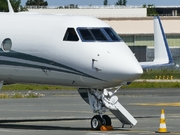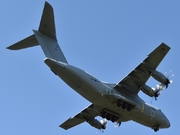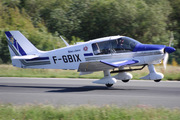Dépêches
Fitch Rates Minneapolis-St. Paul Metro Airports Commission $157MM Bonds 'AA-'; Outlook Stable
Dépèche transmise le 20 octobre 2009 par Business Wire
NEW YORK--(BUSINESS WIRE)--Fitch Ratings has assigned an 'AA-' rating to the Minneapolis-St. Paul (Minnesota) Metropolitan Airports Commission's (the commission) approximately $157 million senior airport revenue refunding bonds series 2009A and series 2009B, scheduled for negotiated sale during the week Oct. 26, 2009. Fitch has also affirmed the 'AA-' rating on the commission's approximately $747 million of outstanding senior lien revenue bonds and the 'A' rating on the commission's approximately $704 million outstanding subordinate lien bonds. The Rating Outlook on all debt is Stable.
The 2009A and 2009B bonds are secured by a senior pledge of the net revenues generated by the operation of the airport system, the main component of which is Minneapolis-St. Paul International Airport (MSP, or the airport). Proceeds of the bonds will be used to current refund portions of the commission's outstanding senior lien series 1999B and series 2000B bonds for present value savings.
Fitch's ratings for the commission reflect the continuation of a strong financial profile and competitive cost structure even under the recent stresses in the general aviation industry and the developing trend of enplanement declines at MSP over the most recent four-year period. The key strengths to the credit are based on the considerable demand for air service generated from a broad-based local economy, a well-balanced traffic profile of originating and connecting passengers, and the lack of competing facilities in the upper Midwest. Further, the commission has largely completed a significant $2.7 billion capital investment program over the past decade and future needs are not likely to result in any meaningful additional leveraging.
Credit concerns continue to center on the dominant market share position from the combined Delta-Northwest Airlines (Delta/Northwest) operations, now comprising almost 80% of total passenger traffic. With the 2008 merger completion of the two carriers, there remains the potential over time for some realignment of service across the hub facilities from the combined carrier network that could translate into a trimming of capacity at MSP. Fitch notes that this risk is tempered at least in the near term as the commission successfully negotiated an extension to the Delta/Northwest use agreement out to 2020 and has also incorporated favorable 'hubbing' covenants that are designed to provide a strong level of the employment and service commitment in the Minneapolis-St. Paul region.
Passenger demand at the airport is sizable at 16.4 million enplanements with approximately half of total traffic derived from connecting passengers. While the airport has a long-term track record of solid enplanement growth, Fitch notes that there have been consecutive years of declines in traffic accumulating to over 10% since 2006. Based on eight-months data through August 2009, traffic is also down an additional 4.6% as compared to the same period in the previous year. Key influences to these trends include the prior bankruptcy filing of Northwest and the general downturn in domestic air traffic demand. Overall, the economy in the Minneapolis region remains strong, with lower unemployment rates and higher per capita income as compared to national averages. Northwest's merger completion with Delta in late 2008 and unique hubbing covenant provisions at MSP, including an annual average of 400 daily departing flights with a majority to come from larger jet aircrafts, may provide greater stabilization of service in the near term. Failure by Delta/Northwest to meet certain minimum service requirements at MSP may trigger their loss of credits from shared concession revenues, a relatively new provision available to all signatory carriers that has allowed cost per enplanement (CPE) levels to remain at moderate levels ($6.14 estimate in 2009).
Eagan, Minnesota-based Northwest is the airport's largest carrier; it and its affiliates accounted for 78.5% of total enplanements in 2008. Adding in Delta's service (still operating under a separate brand throughout all of 2009), the combined market share increases slightly to 79.7% of traffic. The other leading carriers serving at MSP include Sun Country Airlines, American Airlines, and United Airlines, none of which represented more than 4% of enplaned passengers in 2008. Southwest Airlines introduced limited service in 2009 and may serve as a catalyst for a larger low-cost carrier presence at the airport.
The airport maintained its sound financial position in 2008, with net revenues providing 2.11 times(x) coverage of senior lien debt service, and 1.48x coverage of subordinate lien debt service, prior to transfers. The airport's CPE remains favorable compared to similar sized connecting hub facilities at $5.61 and is projected to rise modestly to $6.14 in fiscal 2009. At current enplanement levels, the commission should be able to maintain stability in its CPE levels over the next several years given the lack of large future debt requirements. In comparison, many other large hub airports across the Midwest will be facing rising CPE levels as costs associated with capital programs are phased into their airline charges. Thus, MSP should be able to maintain its favorable cost position. Cash reserves are notably strong with unencumbered balances in excess of $200 million, translating to 665 days cash on hand, as well as separate balance of passenger facility charge (PFC) funds equal nearly another $200 million.
Having completed most of its $2.7 billion 2010 capital program, the principal component of which was the construction of a new runway, the airport's future capital needs are modest. Through 2016, the airport's capital program will total $523 million. Most of the projects relate to airfield and runway rehabilitation, noise mitigation, and routine terminal improvements. At this time, the airport estimates a need of approximately $90 million in additional borrowing, with most of the program financed through internal sources, PFC revenue, previously issued bonds, and grants. However, the airport is preparing a 2020 plan, which includes possible expansions of both the Humphrey and Lindbergh Terminals. This plan has an estimated added cost in excess of $500 million, and is highly discretionary in nature with the largest elements to be undertaken only as demand warrants.
The application of the following criteria was used to derive the rating of the above referenced bonds:
-- 'Rating Criteria for Infrastructure and Project Finance', dated Sept. 29, 2009;
-- 'Airports Rating Criteria Handbook for General Airport Revenue, PFC and Letter of Intent Bonds' dated March 12, 2007.
Both are available on the Fitch Ratings web site at 'www.fitchratings.com'.
Additional information is available at 'www.fitchratings.com'.
ALL FITCH CREDIT RATINGS ARE SUBJECT TO CERTAIN LIMITATIONS AND DISCLAIMERS. PLEASE READ THESE LIMITATIONS AND DISCLAIMERS BY FOLLOWING THIS LINK: HTTP://FITCHRATINGS.COM/UNDERSTANDINGCREDITRATINGS. IN ADDITION, RATING DEFINITIONS AND THE TERMS OF USE OF SUCH RATINGS ARE AVAILABLE ON THE AGENCY'S PUBLIC WEBSITE 'WWW.FITCHRATINGS.COM'. PUBLISHED RATINGS, CRITERIA AND METHODOLOGIES ARE AVAILABLE FROM THIS SITE AT ALL TIMES. FITCH'S CODE OF CONDUCT, CONFIDENTIALITY, CONFLICTS OF INTEREST, AFFILIATE FIREWALL, COMPLIANCE AND OTHER RELEVANT POLICIES AND PROCEDURES ARE ALSO AVAILABLE FROM THE 'CODE OF CONDUCT' SECTION OF THIS SITE.
- 24/04Ibis Styles London Heathrow : l'hôtel géré par un passionné d'aviation pour les passionnés d'aviation (photos + vidéos)
- 23/04 SkyUp renouvelle son partenariat avec Wizz Air
- 23/04 Play : résultats de mars 2024
- 23/04 Les garde-côtes japonais commande trois Airbus H225 supplémentaires
- 23/04 Vueling et Make-A-Wish France signent un partenariat
- 23/04 TUI annonce ses destinations au départ de Deauville pour l'été 2024.
- 23/04 Twin Jet renforce son programme de vols sur la ligne Toulouse/Rennes
- 23/04 Norse Atlantic Airways : résultats du mois de mars 2024
- 23/04 Volotea renforce son offre entre Lille et le Maroc
- 22/04 Finnair a dévoilé son programme de vol pour les saisons hiver 2024 et été 2025
- 22/04 Qatar Airways annonce le lancement de vols à destination de Kinshasa
- 22/04 Vietnam Airlines et CAE prolongent leur accord
- 22/04 Mermoz Academy de Tours commande des Tecnam P-Mentor
- 22/04 Transavia France reçoit son 2e Airbus A320neo
- 20/04 Friedrichshafen 2024 : Blackwing présente un nouveau modèle de son BW650RG
- 20/04 Friedrichshafen 2024 : JMB Aircraft présente son Phoenix
- 19/04 Friedrichshafen 2024 : le projet "Fly To The North"
- 19/04 Friedrichshafen 2024 : Aura Aero présente pour la première fois ses trois appareils
- 19/04 Friedrichshafen 2024 : Duc Hélices présente son hélice Tiger-3
- 19/04 Friedrichshafen 2024 : Splash-in Aviation expose son Pétrel X







